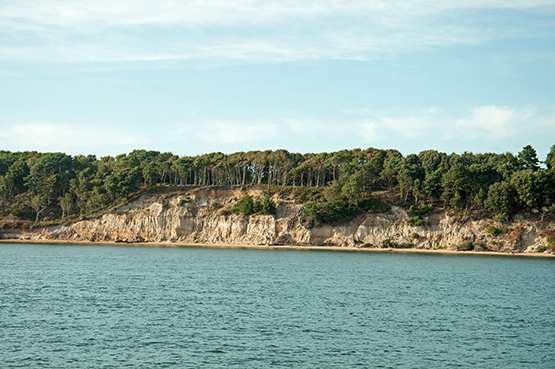We look at why stalking Sika deer in Dorset has become an environmental necessity and where you can access the finest Sika deer stalking in the UK.

With no natural predation, the stalking and management of wild Sika deer in Dorset has become an environmental must, with the population having grown exponentially since the 1860’s when they were first introduced, to levels that now jeopardise the biodiversity of this beautiful county and the sustainability of other flora and fauna.
In the 19th Century it was customary and a symbol of prestige, for the landed gentry to have deer on their country estate. The ornamental Fallow deer was, and remains a common sight on many estates, however, it was also commonplace to introduce other exotic deer species from China, India and Japan, including Pere David, Bara Singha and Sika deer.
Around 1860 – 1890 one such example was Brownsea Island, just south of Poole, which was then owned by the wealthy MP Major Kenneth Balfour. However, what the good Major failed to realise, was just how well Sika deer could swim and with the island no more than 500m from nearby Sandbanks and around a kilometre from the Isle of Purbeck, it was not long before Sika deer were being found on the mainland.

Numbers migrating from the island to the mainland might have been limited, were it not for a devastating fire that swept across Brownsea Island in 1934, causing much of the resident population to bring forward their travel plans!
Today, nearly a century on, along much of the Jurassic Dorset coastline and across much of the county, Sika deer have adapted extremely well to their new surroundings and have spread into the New Forest and as far as Dorchester, Salisbury and Southampton.
A large, hardy deer renowned for having a range of calls, from a ‘whistle’ to a bloodcurdling ‘wail’ and ‘witches cackle’, Sika deer are notorious for stripping bark from trees and ‘bole-scoring’, something that results in a deep raking of trees with their antlers.
Today, much of the region’s woodland now bears the scars of this behaviour and with Sika deer, increasing at a rate of around 30% per annum, this characteristic behaviour and their prolific grazing and browsing of young trees, shrubs, and grass, has resulted in a reduction in nesting birds, butterflies and wildflowers. This has impacted in particular on areas such as the RSPB nature reserve on the Arne peninsula, which was established in part, to protect the Dartford Warbler.
Here at County deer stalking, we recognise the need for balance and biodiversity, we also recognise the thrill of stalking and hunting deer and the health benefits of eating Sika deer venison, which is one of the finest wild meats available. Low in cholesterol, leaner than chicken and packed with vitamins not found in other red meats. We offer deer hunters the opportunity to reduce their consumption of intensively farmed meat and harvest this local, sustainable, wild, free-range food source, whilst simultaneously assisting with the biodiversity of the region.
Equipped with the right authorisation and rifle, Sika stag may legally be taken between 1st August – 30th April and Sika hinds between 1st November – 31st March. The best time to hunt Sika Stag is during the rut in late September and early October. For hinds, we recommend hunting anytime between November through to late February, when the young are independent of their mothers.
Our hunting is on the Isle of Purbeck in Dorset, where due to their high numbers and the beautiful Jurassic scenery of the region, we believe we can offer the best Sika deer stalking anywhere in the UK.
To book an outing stalking Sika you can call us on: 0203 981 0159 or email:
To watch a short film in which we stalk Sika on our exclusive hunting grounds in Dorset, follow this link: youtube.com/watch
To read more about Sika deer stalking click here: sika-deer-stalking



















